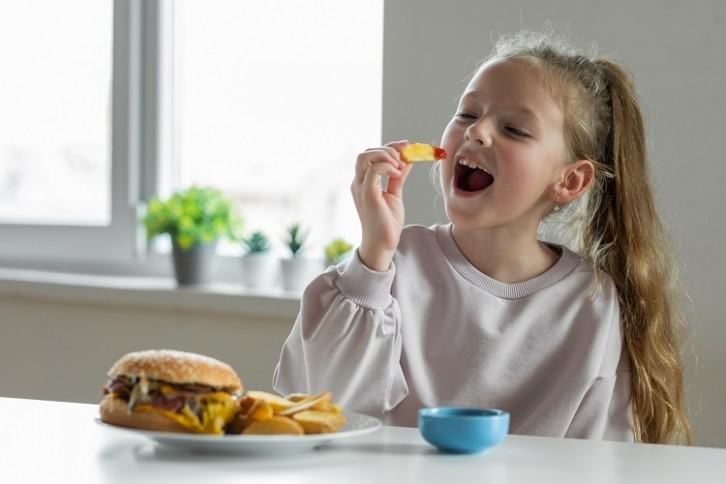The building backlash against ultra-processed food for children

Campaigners have warned that the prevalence of ultra-processed foods (UPFs) in European supermarkets poses a ‘serious threat’ to children’s health.
Though much evidence has focused on the health impact of a diet high in UPFs among adults, in May researchers in Spain studied the effects on children by collecting and comparing metrics from nearly 1,500 children, aged between three and six, and mapping this against the proportion of their diet that consisted of UPFs.
They found that children with the highest levels of consumption were more likely to have higher body-mass-index (BMI) scores, a larger waist circumference, greater fat levels and higher blood sugar scores, compared to those who consumed the least.
Their findings come at a time when there are growing calls for food manufacturers to address the quantity of UPFs in children’s food aisles.
High rates of UPFs across childhood
Last year, analysis by UK-based charity First Steps Nutrition Trust found that up to a third of foods sold for babies and toddlers could be classified as ultra-processed. In fact, between the ages of two and five, UPFs account for nearly two thirds (61%) of the total mean energy intake of UK children – a higher proportion than their peers in the United States and Australia, according to the organisation’s research. Pre-prepared baby meals and purees, finger foods and vegetable-based snacks and soft drinks targeted at toddlers and children, were all classed as UPF.
The charity used the NOVA system of classification for its research. According to this model, UPFs are those that use many ingredients, such as additives, hydrogenated fats and modified starches, that are ‘rarely used in home cooking’. These products are ‘mainly of industrial origin’ and are characterised often by a long shelf life.
And in July another study found that this high intake of UPFs continues into adolescence across Europe. Combined research by the Universities of Cambridge and Bristol found that, on average, two thirds (66%) of adolescents’ energy intake comes from UPF consumption. Rates were highest among those from deprived backgrounds, those of white ethnicity and younger adolescents.
‘It’s clear from our findings that ultra-processed foods make up the majority of adolescents’ diets, and their consumption is at a much higher level than is ideal, given their potential negative health impacts,’ said research associate Yanaina Chavez-Ugalde.
Serious threat to health
“The prevalence of ultra-processed foods in children’s diets poses a serious threat to their health and wellbeing,” says Rob Percival, head of food policy at the Soil Association, which has directly called on governments to intervene via policy changes, including mandatory procurement standards in schools.
“Markers of ultra-processing include chemicals you would never find in a family kitchen, such as emulsifiers, artificial colours and flavours and other additives,” he says.
“Governments around the world – including France, Canada, and Latin America – are beginning to introduce policies framed around ultra-processed foods, putting pressure on manufacturers to seek alternatives.
“We must go further,” he adds. “Governments should be regulating these unhealthy foods, restricting the lobbying powers of the industry, and working to ensure that everyone can access and enjoy a healthy diet based around fresh and minimally processed foods.”
Addressing concerns
Some brands and manufacturers are taking steps to address the building concern around UPFs in children’s food, believes Alexandra Hayes, co-founder at food consultancy Harris + Hayes.
“In the face of a lot of such scrutiny, organisations such as Ella's Kitchen have recently set ambitious targets to help improve children's eating habits, and more specifically, increase their fruit and vegetable intake via their products,” she says. “This is much needed, considering the sobering evidence, as recently laid out by the Food Foundation [which laid out the deterioration in children’s health and wellbeing in its recent June report].
“We've [also] seen a rise in premium, fresh or frozen baby food brands including Rumble Tums co-founded by nutritionist Madeleine Shaw,” she adds. “With a focus on great quality ingredients, and nutritionally sound recipes, these launches disrupt the category for the better, but are naturally not accessible for most people, at a premium price point.”
At Birds Eye manufacturer Nomad Foods, the company is also focused on addressing the issue, says its senior nutrition manager Lauren Woodley. “Given the concerning levels of childhood obesity across Europe, we’re dedicated to responsible marketing and ensuring that that those products we know to be popular with children such as our Fish Fingers, Chicken Dippers, Potato Waffles and Goodfella’s Pizzas are objectively healthy.
“We also aim to demystify how our products are made to reassure our consumers. For example, our iconic family-favourite Fish Fingers are made in our factories in the same way that a consumer would make them at home, from just fish, breadcrumbs and healthy rapeseed oil.”
Exactly how UPFs are defined is an area of ongoing debate though, she points out.
“There is no universally agreed definition of what constitutes an ‘ultra-processed’ food; the NOVA classification which has generated a lot of attention recently is widely contested and goes against the current nutrition science-based food health classification systems endorsed by organisations including the FAO, WHO and EFSA.” Instead, Nomad Foods applies the UK Government Nutrient Profiling Model, she explains, by which standard the overwhelming majority (93.3%) of its branded sales are already from ‘healthy’ products.



























